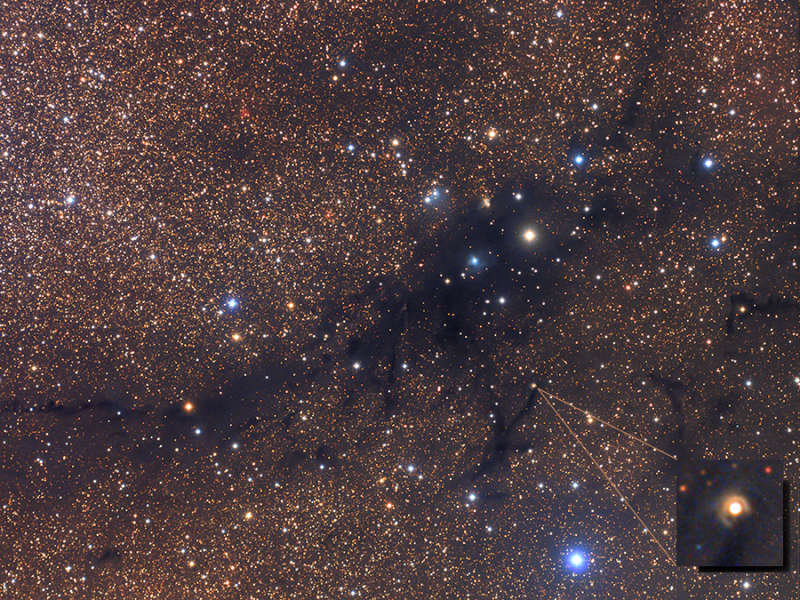Credit & Copyright: Bob Franke
Explanation:
Obscuring the rich starfields of northern Cygnus, dark nebula LDN 988
lies near the center of
this cosmic skyscape.
Composed with telescope and camera, the scene is some 2 degrees
across.
That corresponds to 70 light-years at the estimated 2,000 light-year
distance of LDN 988.
Stars are forming within
LDN 988,
part of a larger complex of
dusty molecular clouds
along the plane of our Milky Way galaxy sometimes
called the Northern Coalsack.
In fact, nebulosities associated with young stars abound in the region,
including variable star V1331 Cygni shown in the inset.
At the tip of a long dusty filament and partly surrounded by a curved
reflection nebula,
V1331 is thought to
be a T-Tauri star, a sun-like
star still in the early stages of formation.
1999 2000 2001 2002 2003 2004 2005 2006 2007 2008 2009 2010 2011 2012 2013 2014 2015 2016 2017 2018 2019 2020 2021 2022 2023 2024 2025 |
Yanvar' Fevral' Mart Aprel' Mai Iyun' Iyul' Avgust Sentyabr' Oktyabr' Noyabr' Dekabr' |
NASA Web Site Statements, Warnings, and Disclaimers
NASA Official: Jay Norris. Specific rights apply.
A service of: LHEA at NASA / GSFC
& Michigan Tech. U.
|
Publikacii s klyuchevymi slovami:
Cygnus - dark nebula - star formation - Pylevaya tumannost' - temnaya tumannost' - zvezdoobrazovanie
Publikacii so slovami: Cygnus - dark nebula - star formation - Pylevaya tumannost' - temnaya tumannost' - zvezdoobrazovanie | |
Sm. takzhe:
Vse publikacii na tu zhe temu >> | |
